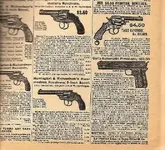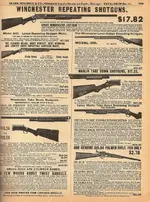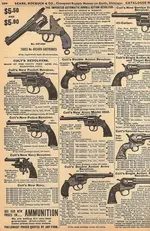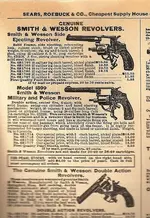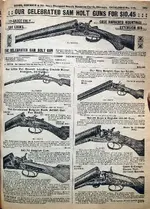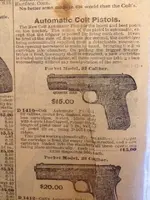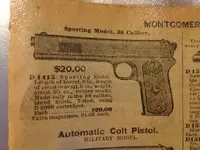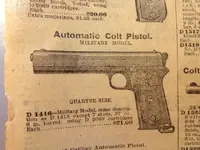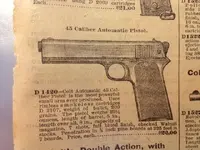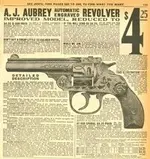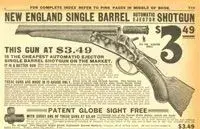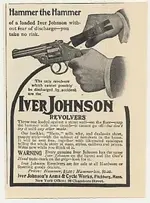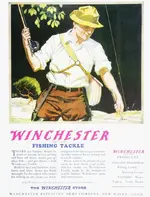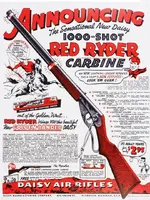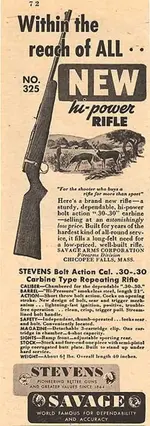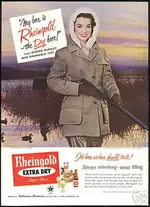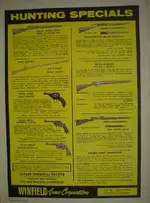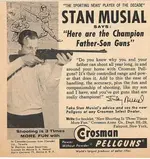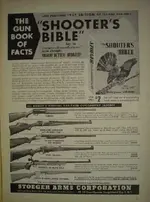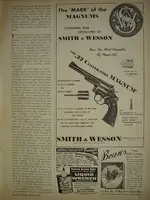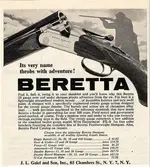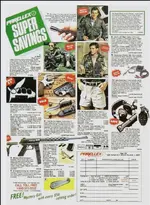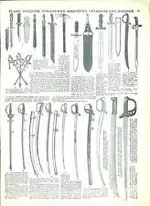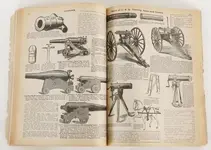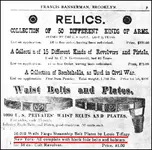A Look at Vintage Firearm Advertising
A Look at Vintage Firearm Advertising: By Robert Reed. As seen in The Antique Shoppe Newspaper, February 2009.
The Civil War era saw the dawn of wide scale advertising of major firearms, although certainly they were advertised well before that time.
However it was that decade of the 1860s when production and public interest in firearms moved significantly in the same direction.
“The development of the breech-loading rifle and shotgun and the coming of the Civil War combined to change firearms forever,” observes Ralf Coykendall, Jr. author of The Complete Guide to Sporting Collectibles. “The war issued in mass-produced American firearms, and the breech-loader opened the way for all that followed, including the lever action, pump or slide action, and the semi-automatics we know and used today.”
Likewise printed advertisements followed the same inevitable commercial path across the country.
“Names like A. H. Fox, Baker, Ballard, Lefever, and L.C. Smith completed for attention in a time of plenty, and American sporting firearms were plentiful and available at prices to fill all pocketbooks,” adds Coykendall. “It is fair to say that these and other American and European firearms makers set the table of that we savor today.”
Advertisements not only promoted those firearm products, but in retrospect they served to authenticate and document those products.
As early as 1864 Wilson and Evans advertised in the San Francisco Business Directory and Mercantile Guide to call attention to the two California locations. They advertisement further offered, “Colt’s Rifles and Pistols, Sharp’s Rifles, Gun Materials, Power, Caps, Wads, etc.
In 1867 the Tyron Brothers and Company of Philadelphia advertised the Superior Derringer Pattern Pistol in one of the city's newspapers. They assured the derringer was “our own make, and superior to any others in the market. The Locks, Barrels and Rifling are of the best material, and the Pistols are beautifully finished."
Most of the vintage advertisements offered the real thing. But there were toy firearms as well. In 1872 Lenhart's Patent Toy Rifle was offered “to teach the use of the rifle without danger." It was being made by the Toy Rifle Manufacturing Company in New Brunswick, New Jersey.
Smith and Weston published some splashy advertisements in the 1880s to hawk their latest hammerless revolver. The revolver in 32 and 38 calibers was, “a perfect and safe arm for the house and pocket."
One further stated: “The accidental discharge of this revolver is made impossible by the application of the Safety Device, which insures protection against accidents so often occurring in the handling of this class of arms, and renders it safe in the hands of small children."
The hammer was included in the Swift Double-Action Revolver also generously advertised in the 1880s. Concluded the illustrated ad, “don't buy until you have seen the Swift. Ask any dealer." Yet another merchant from New York City offered a Springfield rifle for $7.50. The advertisement, apparently with tongue-in-cheek, added this warning:
“Remember this is not toy Rifle, not a catchpenny but a regular long range Rifle, good for game, deer, buffaloes, wild geese, bears, or burglars, road agents, and Indiana."
Elsewhere in New York City the 1886 edition of Bloomingdale's illustrated catalog offered hand guns including three variations of the six shot Blue Jacket. The wood handled model was 75 cents, ivory handles were $1.49, and the ultimate pearl handles Blue Jacket was $2.50.
Beyond the dozen hand guns listed, Bloomingdale's promised, “a full line of firearms, sporting goods and ammunition constantly on hand."
Harper's Weekly in 1889 carried an advertisement for Colt repeating rifles, “new from the factory." The price was $11. The advertiser based in Boston also offered a catalog containing firearms, fishing tackle, sporting goods, and bicycles. Still another Harper's Weekly advertiser during that same year offered pistols for 75 cents, rifles for $2, and “double breech-loader" guns for $6.75.
Firearms were widely advertised and widely sold in 1890s America. The 1895 Montgomery Ward mail order catalog, for example, listed 42 types of handguns alone. They ranged from a “vest pocket issue for 50 cents to Colt's new Navy revolver for $12. Somewhere in between was Harrington & Richardson's Improved Automatic Shell Extracting Double Action Self-Cocking Revolver. It was priced at $5.
The firearm advertisements at Montgomery Ward that year carried one qualifier. “In accordance with the following extract," it read, “we cannot sell a minor resident of the State of Illinois a revolver. This law does not apply to any state except Illinois."
Early in the 20th century the Sears, Roebuck and Company catalog devoted several pages to the mail-order of firearms. One page featured a huge illustration of the of the New England Single Barrel automatic ejector shotgun. According to the ad the shotgun was “made for us under contract by a large New England manufacturer, every gun guaranteed for strength, durability, shooting qualities and construction." The price was $3.49.
In 1908 Sears also used a full page to advertise the A. J. Aubrey hammerless revolver. At $4.50 it was offered for “one-half the price at which revolvers that will in no way compare with it sell, we urge you to order this."
Fishing and Hunting Magazine provided a series of relatively lavish full-color advertisements from firearms manufacturers during the1920s. Outstanding among them was the Winchester Repeating Arms Company of New Haven, Connecticut. Some of the Winchester ads featured not only firearms but other products including fishing rods and reels, knives and even roller skates.
Winchester remained in the forefront with advertising during the latter 1940s with advertising in popular men's magazines. The firm used a full-color page in one which promoted four different Winchester rifles and shotguns. Again the ad included a multitude of products including roller skates, batteries, and flashlights.
Other major firearm advertisers of that era included The Marlin Firearms Company of New Haven, Connecticut. One particular item featured in the ads was the Marlin Model 39-A lever action repeating rifle. The 25-shot firearm was priced at $50.45 in 1948. Some of the Marlin advertisements also mentioned dingle and double edge shaving blades.
Today so many of the classic old firearms of the past are highly collected. At the same time many of the vintage advertisements which document and detail the glory days of some companies and their firearms remain worth saving too.
